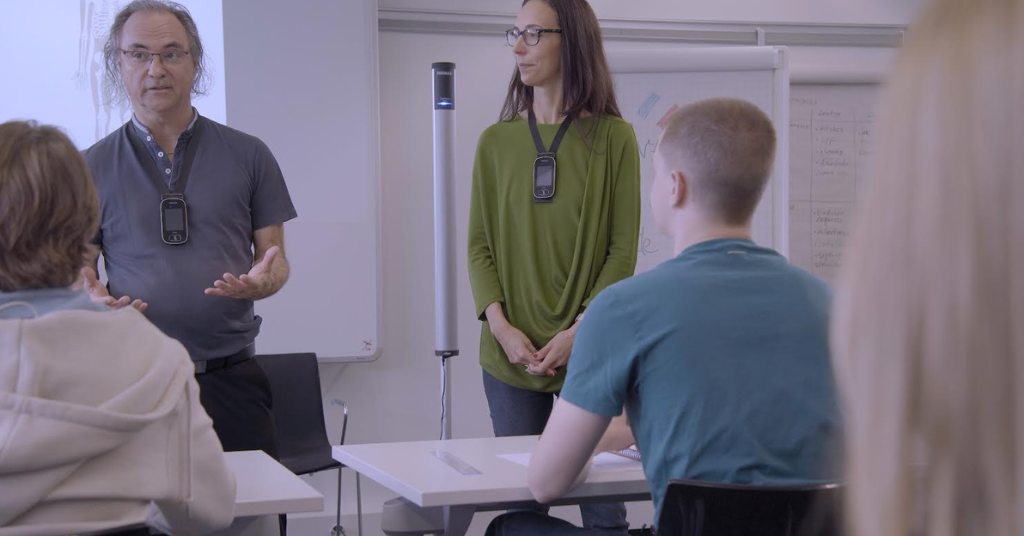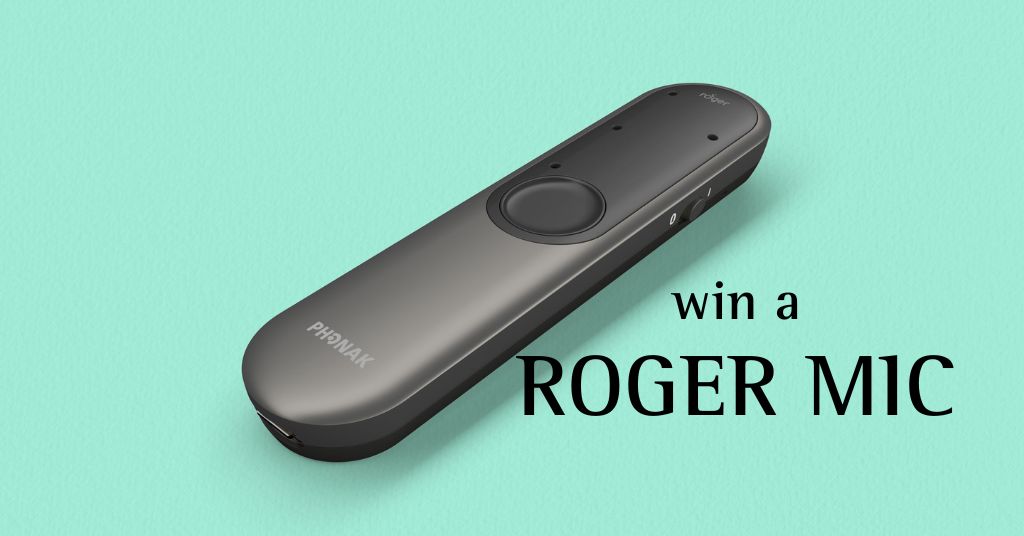
Listening to different hearing aids taught me how to better help my daughter
June 14, 2019
Why are we in denial of our hearing loss?
June 18, 20194 hearing technology accessories used in the classroom by teens with hearing loss

For many teachers, having a hard of hearing or deaf student can be eye-opening and present new challenges such as trying to decipher the code of hearing technology.
Many deaf students utilize an FM system to transmit a teachers’ voice directly to their hearing aids for clarity and understanding. Now that the world is becoming more technology oriented, so is hearing technology, so let me introduce you into some of the most common hearing aid accessories used in the classroom.
1) Hearing aids
These are often what most people are the most curious about. These devices take in sound and put it through a previously uploaded program from an audiologist. It then plays the resulting sound into a tube connected to the ear mold. These hearing aids allow the user to access sound and verbal communication around them.
Be aware: not all people who wear hearing aids know sign language and may be offended if you ask. For example, I was outfitted with hearing aids at three years old and grew up with English as my first language. I personally didn’t start learning American Sign Language (ASL) until 6th grade. Even now that I can communicate in sign language, I’m nowhere near fluent. I would and still get questions about whether or not I use sign language and respond with “yes, but I didn’t use sign language until I started learning in 6th grade”. However, some students may utilize a sign language interpreter in addition to wearing hearing aids and receiving auditory information.
“Even now that I can communicate in sign language, I’m nowhere near fluent.”
Another aspect to be aware of is when the user is not wearing their hearing aids. This can be a result of several things. For example, a bad ear infection (we are more susceptible to them since the ear molds can trap moisture in the ear canal), a lost hearing aid, a headache that results from listening fatigue, or a desire not to wear them.
Whatever the cause, be mindful if you notice that the student isn’t wearing one or both of their hearing aids. Make sure to ask them what works best for them in terms of learning the material or communicating. Also, be aware that it’s extremely exhausting if a student is not wearing their hearing aids to listen to verbal information in their classroom since their brains try to fill in the missing information.
2) Phonak Roger Touchscreen Mic
A personal favorite of mine, this microphone can be used in small groups, as a directional mic, and a wearable mic. The touch screen allows for easy troubleshooting. You should notice that there are only two buttons. The big one with the picture of a microphone with a slash and one on the side that has a power button decal.
The latter will turn on/ off the screen with one click and offer options to turn off the device if the button is held down for three seconds. This is not the button that concerns you as the wearer, whereas the large one does. The larger button is used to mute/ unmute the microphone. This is very important to the student that you are prudent in muting during conversations with other students, teachers, and parents. It’s also appreciated if it’s turned off while you use the restroom.
Some students will not be unable to disconnect their hearing aids from the FM at their whim. They depend on you to mute the microphone when it’s not being used. One strategy you can use that I’ve used in the past is to develop a series of hand signals denoting “mute” or “unmute” so both the student and the wearer can have the best communication.
Read more: This is how to get FREE hearing technology at your university
3) Phonak Roger receivers/ FM boots
These are the most easily lost pieces of technology that you will ever come across, aside from hearing aids. Generally, these are grey or silver and are about three times smaller than the body of the hearing aid. Yeah, it’s tiny. I personally recommend keeping small trash cans far away from the charging station for the FM system, often where these boots are placed.
Trust me. I’ve had to fish my Roger receivers out of trash cans more often than I’d like to admit. This makes it all the more important that if a student asks for help with finding these receivers that you help as an additional set of eyes. If the FM boots are detachable, then the student may elect to disconnect themselves manually from the FM system. This makes muting/ unmuting the microphone less of a burden. However, if the FM boots are integrated into the hearing aids, they don’t have control of the FM from their hearing aids. Generally, unless you’re an elementary school, there shouldn’t be much of a concern.
4) Phonak Roger select
This is most commonly used in a small group setting with six directional microphones. The benefit of having these mics is that you can activate one, a few, or all of them. This helps the student in one of the hardest classroom situations- a small group activity. Although this can help, many students including myself elect to move to a quieter area in order to hear our classmates better. However, this isn’t a cure-all for one of my biggest struggles, socratic seminars.
There’s no good solution to this, so I often use the Phonak Roger Touchscreen Mic (mentioned above) or my Roger Select as a pointed microphone to hone in on one individual’s voice. Another thing I always mention beforehand in socratic seminars is for everyone to clearly speak one at a time. I also ask that their faces are visible to me so I can lipread.
These pieces of technology are often used by hard of hearing or deaf students to enhance their understanding of verbal communication in the classroom, but may not be used by everyone. Some use interpreters. Some don’t use technology at all. However, when an FM system is handed to you, wear it like a necklace and go on with your talking. The button on the front should face out and microphones facing away from you. Otherwise, we hear your shirt and not your voice.
Be cognizant of it but don’t act like it’s super foreign to you. Be understanding that deaf students may not understand what you told them the first time, you may have to repeat yourself one or many more times. These are the little things that a student will be thankful if you know.
What are your favorite classroom accessories to help you hear?







